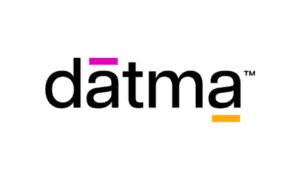Introduction
The financial world moves fast. Traditional methods struggle to keep up with market swings and data overload. Trade Vector AI emerges as a clear leader in automated portfolio management. This innovative investment platform uses machine learning and advanced analytics to make smart decisions without constant human intervention. As an automated crypto platform and versatile platform for trading, Trade Vector AI offers a new way to grow assets.
Big data and volatility define today’s markets. Companies face a flood of information from global exchanges, news feeds, and social sentiment. Manual analysis can be slow and error-prone. Trade Vector AI changes this by processing millions of data points in real time. Its engine scans price trends, on-chain metrics, and risk indicators to rebalance portfolios instantly. This speed and precision set it apart from older robo-advisor tools.
What does “automated portfolio management” really mean? It refers to systems that allocate capital, monitor risk, and execute trades according to pre-defined rules and adaptive models. Trade Vector AI goes further by incorporating agentic AI—self-learning agents that refine strategies over time. Unlike simple rule-based bots, Trade Vector AI adjusts to shifting market conditions and learns from each trade.
In this article, we will explore why Trade Vector AI stands out among other AI tools. You will learn about its core components: data ingestion modules, predictive engines, and trade orchestration layers. We will outline the market drivers that fuel the rise of automated platforms, and examine real use cases where Trade Vector AI outperforms legacy systems. Finally, we will preview how this platform for investments compares to competing solutions and why it might be the right choice for firms of any size.
By the end of this introduction, you will understand the key concepts behind Trade Vector AI, including how it blends machine learning, cloud computing, and financial expertise. You will see how an automated crypto platform can reduce operational costs, speed up decision-making, and improve risk management. The journey begins here, with a deep dive into Trade Vector AI and a roadmap for what comes next.
Market Landscape and the Role of Trade Vector AI in Portfolio Management
The evolution of portfolio management has been dramatic. In the early days, investors relied on simple rule-based systems that rebalanced assets at fixed intervals. These legacy approaches often missed sudden market shifts and could not process unstructured data. With the rise of machine learning and generative AI, a new generation of solutions emerged. Among them, Trade Vector AI has taken center stage by addressing both speed and complexity.
Trade Vector AI operates in an environment where data pours in from multiple sources: price feeds, blockchain analytics, social sentiment, and macroeconomic indicators. Traditional robo-advisors could handle only a fraction of these inputs. In contrast, Trade Vector AI’s data ingestion module continuously aggregates structured and unstructured information. This allows the platform to detect patterns that earlier tools might overlook. As a result, firms using Trade Vector AI can respond to market swings in seconds instead of hours.
One of the main drivers behind adopting Trade Vector AI is the growing demand for error reduction. Even a small miscalculation can erode returns, especially in volatile crypto markets. By automating trade execution, Trade Vector AI minimizes human errors such as mistimed orders or misread signals. Furthermore, the platform’s predictive engine uses adaptive models that refine themselves with each trade, so accuracy improves over time.
Another critical factor is resource efficiency. Investment teams often spend countless hours gathering data, running spreadsheets, and drafting reports. Trade Vector AI automates these tasks, freeing analysts to focus on strategy rather than housekeeping. For example, a mid-sized hedge fund reported a 40% reduction in manual work hours after integrating Trade Vector AI, allowing its quants to develop new strategies instead of crunching numbers.
Risk monitoring is also more robust with Trade Vector AI. Legacy systems typically relied on static thresholds, but real markets demand dynamic risk controls. Trade Vector AI evaluates portfolio exposures in real time, flagging anomalies and reallocating assets when volatility spikes. This proactive approach helps firms maintain target risk profiles, even in turbulent conditions.
As more organizations seek competitive advantage, the role of an automated crypto platform like Trade Vector AI becomes indispensable. It combines speed, reliability, and adaptive intelligence, offering a holistic solution for modern portfolio management. In the next section, we will examine the internal architecture and key features that make Trade Vector AI a standout choice among AI-driven financial tools.
Architecture and Key Features of Trade Vector AI
Trade Vector AI is built on a modular architecture that seamlessly integrates data collection, predictive modeling, and trade execution. At its foundation lies the data ingestion layer, which aggregates market prices, blockchain metrics, and sentiment signals from news and social media. This information flows into the predictive engine, where machine learning algorithms analyze historical trends and real-time updates to forecast asset performance.
The predictive engine of Trade Vector AI uses a combination of supervised learning and reinforcement learning. Supervised learning models are trained on labeled market scenarios, helping the platform recognize patterns that preceded significant price movements. Reinforcement learning agents then simulate trading actions, learning to maximize returns while managing drawdowns. Over time, these agents refine their strategies based on live trading outcomes, enhancing the platform’s adaptability.
Central to Trade Vector AI is the orchestration layer. This component transforms predictions into actionable orders. It balances execution speed with cost considerations by splitting large orders into smaller ones and routing them across multiple exchanges. The orchestration layer also applies real-time risk controls. If market volatility exceeds predefined thresholds, Trade Vector AI automatically adjusts position sizes or temporarily pauses trading to protect the portfolio.
Security and compliance are baked into every stage of the Trade Vector AI architecture. Data transmissions between components are encrypted, and each trading action generates an audit trail. Detailed logs record the inputs, model versions, and decision rationale for every trade. This transparency supports regulatory requirements and internal governance, ensuring that portfolio managers can explain how and why specific trades occurred.
Integration flexibility sets Trade Vector AI apart. The platform offers RESTful APIs and prebuilt connectors for popular ERP and CRM systems. For example, treasury departments can link Trade Vector AI to enterprise accounting software to automate reporting of realized gains and losses. Brokerage firms can connect directly to exchange APIs, enabling ultra-low latency executions. This interoperability makes Trade Vector AI a versatile platform for trading that adapts to a wide range of organizational needs.
In practice, these architectural elements work together to deliver a unified experience. Firms gain continuous portfolio monitoring, seamless data flows, and automated execution without risking security or compliance. By combining robust engineering with advanced AI methods, Trade Vector AI establishes itself as a leading automated crypto platform and comprehensive solution for modern portfolio management.
Comparison of Trade Vector AI with Other AI Tools
Trade Vector AI leads the pack in automated portfolio management, but it is important to see how it stacks up against competitors. Four prominent platforms—FIS Intelligent Portfolio, Sage Intacct AI, Vertesia Generative-DAM, and LynkCM Agentic AI—offer varying strengths. In the table below, you can compare these solutions by integration depth, model transparency, and licensing cost.
| Platform | Integration Depth | Model Transparency | Cost |
| Trade Vector AI | Native ERP/CRM connectors, exchange APIs | Full audit logs, versioned models | Mid-range subscription with usage tiers |
| FIS Intelligent Portfolio | Core banking systems only | Proprietary models, limited visibility | High enterprise license |
| Sage Intacct AI | Accounting modules, basic API | Rule-based insights, no detailed logs | Moderate add-on fee |
| Vertesia Generative-DAM | Digital asset management only | Transparent tagging models | Low-to-mid SaaS cost |
| LynkCM Agentic AI | Custom integration per client | Interactive explainability dashboard | High consulting fees |
In this comparison, Trade Vector AI offers the most comprehensive integration depth. Its prebuilt connectors reduce setup time, unlike FIS which requires heavy customization. Trade Vector AI’s model transparency is also unmatched; detailed audit trails let compliance teams trace every decision. This contrasts with Sage Intacct AI, whose rule-based approach lacks versioned machine learning insights.
Cost considerations further highlight Trade Vector AI’s value. The subscription tiers adapt to firm size, rather than imposing a fixed enterprise fee. By contrast, FIS Intelligent Portfolio demands a high upfront license, and LynkCM Agentic AI incurs significant consulting expenses. Trade Vector AI’s flexible pricing ensures that both mid-market firms and large institutions can benefit.
Real-world use cases underscore these points. A mid-sized fund using Trade Vector AI achieved seamless ERP integration in weeks, whereas another firm spent months integrating FIS. Similarly, reports from finance teams note that Trade Vector AI’s transparent decision logs eased regulatory audits, while Sage Intacct AI clients struggled to explain AI-driven recommendations.
Ultimately, Trade Vector AI stands out as a balanced solution. It combines deep system integration, clear model governance, and cost flexibility. For organizations seeking an automated crypto platform or advanced investment tool, Trade Vector AI offers a compelling combination of features and affordability.
Best Practices for Implementing and Scaling with Trade Vector AI
Successful adoption of Trade Vector AI begins with clean and reliable data. Before deployment, investment teams should audit their data sources, standardize formats, and establish automated feeds into the Trade Vector AI ingestion module. This ensures that the platform’s predictive engine receives consistent inputs, reducing the risk of gaps or anomalies. In many implementations, teams discover legacy spreadsheets or siloed databases that require consolidation, and addressing these issues upfront smooths integration.
Next, a robust infrastructure is essential. Trade Vector AI offers cloud-native and on-premise deployment options, but both require careful configuration. Security best practices include encrypting data at rest and in transit, restricting access via role-based controls, and conducting regular vulnerability scans. Organizations often implement DevOps pipelines to automate updates, tests, and rollbacks for Trade Vector AI components, minimizing downtime and ensuring that new model versions deploy seamlessly.
Building the right team around Trade Vector AI is critical. Quantitative analysts can define target allocations and risk parameters, while data engineers maintain data pipelines and monitor latency. AI engineers customize model settings and oversee the retraining schedule. Collaborative workshops that bring these roles together help align expectations, and clear documentation of Trade Vector AI’s workflows accelerates troubleshooting. Many firms appoint a dedicated project manager to coordinate tasks, track milestones, and communicate progress to executive sponsors.
Explainability and compliance represent ongoing commitments. Trade Vector AI generates detailed logs for every trade, capturing the model version, input data, and decision rationale. Regular audits of these logs help compliance teams verify that Trades Vector AI operates within regulatory guidelines. Additionally, firms establish review checkpoints where internal auditors or external consultants evaluate the platform’s performance and adherence to policies. This transparency not only fulfills legal requirements but also builds trust with stakeholders who may be unfamiliar with AI-driven processes.
Scaling Trade Vector AI often involves expanding into new asset classes or geographic markets. When venturing beyond equities into crypto, clients tap into the platform’s automated crypto management features, which include on-chain analytics and decentralized finance integrations. For global operations, Trade Vector AI’s multi-currency support and localization options facilitate compliance with local regulations and tax reporting. By following these best practices—data readiness, secure infrastructure, skilled teams, and rigorous governance—organizations can unlock the full potential of Trade Vector AI and achieve sustainable growth.
Future of Trade Vector AI and Conclusion
Trade Vector AI has already demonstrated its ability to transform portfolio management. Today, it processes real-time data and adapts to market changes. Tomorrow, it will evolve further through multi-agent collaboration. In this emerging model, several AI agents coordinate to explore diverse strategies, share insights, and optimize decision-making collectively. Trade Vector AI’s architecture is well suited for this, allowing new agents to plug in without disrupting existing workflows.
Decentralized finance integration represents another frontier. As DeFi protocols mature, the platform’s automated crypto features will expand to include yield farming optimization, liquidity provision across chains, and automated arbitrage. Trade Vector AI’s engine will simulate on-chain scenarios at scale, identifying profitable opportunities while continuously updating risk parameters. This capability positions Trade Vector AI as a bridge between traditional asset management and cutting-edge blockchain finance.
Generative AI will play an increasing role in regulatory reporting and client communication. Trade Vector AI is already exploring text-generation modules that draft performance reports, risk summaries, and compliance disclosures. Over time, these modules will learn preferred writing styles, legal requirements, and stakeholder priorities, producing clear narratives that accompany numerical insights. Clients will receive bespoke reports generated by the same intelligent platform that manages their assets.
Certain challenges lie ahead. Trust and explainability remain paramount. Even as models grow more sophisticated, Trade Vector AI must maintain transparency. Continued investment in audit trails, model documentation, and interactive explainability dashboards will be vital. Furthermore, evolving regulations around AI and digital assets will require agile updates to the platform’s compliance framework. Trade Vector AI’s modular design ensures that new controls and reporting features can integrate smoothly when rules change.
In conclusion, Trade Vector AI stands at the forefront of automated portfolio management. It combines advanced machine learning, real-time data processing, and robust infrastructure to deliver an investment platform capable of managing both traditional assets and cryptocurrencies. By following best practices for implementation and governance, organizations can harness Trade Vector AI to reduce manual effort, improve accuracy, and stay ahead in a competitive landscape. As AI-driven finance continues to advance, Trade Vector AI’s flexible architecture and forward-looking roadmap will help clients adapt to new market realities and seize emerging opportunities.

































